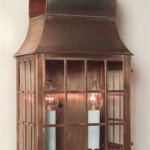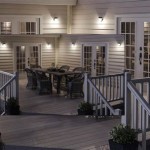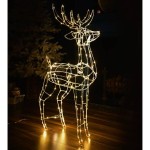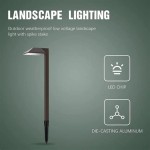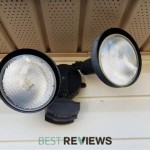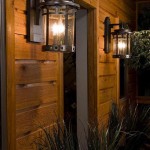What Fabric Is Outdoor Cushions Made Of?
Selecting the right fabric for outdoor cushions is a crucial decision that directly impacts the longevity, comfort, and aesthetic appeal of outdoor furniture. These cushions are constantly exposed to harsh environmental elements such as sunlight, rain, wind, and fluctuating temperatures. Therefore, the fabric must be durable, weather-resistant, and easy to maintain to withstand these conditions and provide long-lasting utility. The ideal fabric choice reflects a balance between performance and visual appeal, ensuring that outdoor spaces remain inviting and comfortable for extended periods.
The composition of outdoor cushion fabrics plays a significant role in determining their performance and durability. Various synthetic and natural fibers are employed, each possessing unique characteristics that make them suitable for different outdoor applications. Understanding the properties of these fibers is essential for making informed decisions about which fabric best suits specific needs and environmental conditions.
Color retention is also a vital consideration for outdoor cushion fabrics. Prolonged exposure to sunlight can cause fading, diminishing the vibrancy and aesthetic appeal of the cushions over time. Fabrics with enhanced UV resistance are preferred to maintain their color integrity and prevent premature degradation. Dyes and treatments specifically designed for outdoor use contribute significantly to colorfastness, ensuring that the cushions retain their original hue for a longer duration.
Beyond material composition and color retention, the construction of the fabric also influences its performance. Tightly woven fabrics generally offer greater resistance to water penetration and abrasion. The weave pattern affects the fabric's breathability, texture, and overall aesthetic. Different weave types, such as plain weave, twill weave, and jacquard weave, offer varying degrees of durability, water resistance, and visual interest.
Understanding Key Fabric Types for Outdoor Cushions
Several fabric types are commonly used for outdoor cushions, each offering a unique combination of benefits and drawbacks. These include acrylic, polyester, olefin, solution-dyed acrylic, and various blends. The selection of the most appropriate fabric depends on factors such as budget, desired lifespan, aesthetic preferences, and the specific environmental conditions in which the cushions will be used.
Acrylic Fabric: Acrylic fabrics, particularly solution-dyed acrylic, are known for their exceptional resistance to fading, mildew, and water. Solution-dyeing involves adding color pigments during the manufacturing process, resulting in superior colorfastness compared to surface dyeing techniques. This makes acrylic an excellent choice for cushions that will be exposed to intense sunlight. Acrylic fabrics are also soft and comfortable, making them a popular option for high-end outdoor furniture. However, acrylic can be more expensive than other synthetic options.
The durability of acrylic fabrics stems from their inherent resistance to degradation from UV radiation and moisture. This prevents the fibers from breaking down and maintains the structural integrity of the fabric over extended periods of outdoor use. Furthermore, acrylic's resistance to mildew prevents the growth of unsightly and potentially harmful organisms, contributing to the longevity and hygienic quality of the cushions.
Polyester Fabric: Polyester fabrics are a more affordable alternative to acrylic and offer good resistance to water, staining, and abrasion. Polyester is a synthetic fiber that is relatively easy to clean and maintain. However, polyester fabrics are generally less resistant to fading than solution-dyed acrylic and may require additional treatments to enhance their UV resistance. Polyester is often blended with other fibers to improve its performance characteristics and enhance its durability.
The water resistance of polyester fabrics is attributed to their hydrophobic properties, which prevent water from readily penetrating the fibers. This makes polyester a suitable option for cushions in areas with frequent rainfall or exposure to moisture. Additionally, polyester's resistance to staining makes it easier to clean and maintain, preventing the accumulation of dirt and grime that can detract from the appearance of the cushions.
Olefin Fabric: Olefin, also known as polypropylene, is a synthetic fiber that is lightweight, strong, and resistant to fading, staining, and mildew. Olefin fabrics are often used in outdoor cushions due to their excellent performance characteristics and relatively low cost. Olefin is also recyclable, making it an environmentally friendly option. However, olefin can be prone to abrasion and may not be as soft as acrylic or polyester.
The inherent resistance of olefin to fading stems from its chemical composition, which makes it less susceptible to degradation from UV radiation. This ensures that olefin fabrics retain their color integrity for a longer duration, even when exposed to direct sunlight. Olefin's resistance to staining and mildew further enhances its suitability for outdoor use, preventing the growth of unsightly and potentially harmful organisms.
Blended Fabrics: Blending different fibers can combine the advantages of each material while mitigating their drawbacks. For example, a blend of polyester and acrylic can offer the affordability of polyester with the enhanced UV resistance of acrylic. Blended fabrics are often engineered to provide specific performance characteristics, such as increased durability, improved water resistance, or enhanced comfort. The specific composition of the blend will determine its overall performance.
The benefits of blended fabrics are numerous, allowing manufacturers to tailor the performance characteristics of the fabric to meet specific requirements. For example, a blend that combines the strength of polyester with the softness of cotton can provide a comfortable and durable fabric for outdoor cushions. The specific properties of the blend will depend on the ratio of each fiber and the manufacturing process used to create the fabric.
Key Properties to Consider for Outdoor Cushion Fabrics
Selecting the best fabric for outdoor cushions requires careful consideration of several key properties, including water resistance, UV resistance, mildew resistance, durability, and comfort. Each of these properties contributes to the overall performance and longevity of the cushions, ensuring that they remain aesthetically pleasing and functional for extended periods.
Water Resistance: Water resistance is crucial for preventing water from soaking into the cushion filling, which can lead to the growth of mold and mildew. Fabrics that are water-resistant or water-repellent will help to keep the cushions dry and comfortable, even in wet conditions. Water resistance is often achieved through the use of tightly woven fabrics or specialized finishes that repel water. Some fabrics may also be treated with a durable water repellent (DWR) finish to enhance their water resistance.
The ability of a fabric to resist water penetration is determined by several factors, including the type of fiber used, the weave pattern, and any applied finishes. Tightly woven fabrics with a dense construction offer greater resistance to water penetration. Additionally, fabrics treated with a DWR finish create a hydrophobic layer that repels water, preventing it from soaking into the fibers.
UV Resistance: UV resistance is essential for preventing fading and degradation of the fabric due to prolonged exposure to sunlight. Fabrics with high UV resistance will maintain their color and strength for a longer duration, even in direct sunlight. Solution-dyed fabrics, such as solution-dyed acrylic, offer superior UV resistance compared to fabrics that are surface-dyed. UV-resistant fabrics are also less likely to become brittle or crack over time, prolonging the lifespan of the cushions.
The mechanism of UV resistance involves the ability of the fabric to absorb or reflect harmful UV radiation, preventing it from damaging the fibers. Solution-dyed fabrics are particularly effective at resisting UV degradation because the color pigments are integrated into the fibers during the manufacturing process. This ensures that the color is evenly distributed throughout the fabric, providing long-lasting protection against fading.
Mildew Resistance: Mildew resistance is important for preventing the growth of mold and mildew, which can cause unsightly stains and unpleasant odors. Fabrics that are mildew-resistant will inhibit the growth of these organisms, even in damp or humid conditions. Synthetic fibers, such as acrylic, polyester, and olefin, are generally more resistant to mildew than natural fibers. Additionally, fabrics can be treated with antimicrobial finishes to enhance their mildew resistance.
The resistance of a fabric to mildew is determined by its ability to resist the growth of fungi and bacteria. Synthetic fibers are inherently more resistant to mildew because they do not provide a food source for these organisms. Antimicrobial finishes further enhance mildew resistance by inhibiting the growth of fungi and bacteria on the surface of the fabric.
Durability: Durability refers to the fabric's ability to withstand wear and tear, abrasion, and other forms of damage. Durable fabrics will maintain their appearance and structural integrity for a longer duration. Factors that contribute to durability include the type of fiber used, the weave pattern, and any applied finishes. Tightly woven fabrics with high tensile strength are generally more durable than loosely woven fabrics. Additionally, fabrics can be treated with abrasion-resistant finishes to enhance their durability.
The durability of a fabric is determined by its ability to resist various forms of damage, including abrasion, tearing, and puncture. Tightly woven fabrics with a dense construction offer greater resistance to abrasion. Additionally, fabrics treated with abrasion-resistant finishes create a protective layer that prevents the fibers from being worn down by friction.
Comfort: While durability and weather resistance are critical, comfort is also an important consideration. Fabrics that are soft and breathable will provide a more comfortable seating experience. Some fabrics, such as acrylic, are naturally softer than others. The weave pattern can also affect the fabric's breathability and texture. Fabrics with a looser weave will generally be more breathable, allowing air to circulate and preventing the build-up of moisture.
The comfort of a fabric is subjective and depends on individual preferences. However, certain factors contribute to overall comfort, including softness, breathability, and texture. Fabrics that are soft to the touch and allow air to circulate will generally be more comfortable for extended periods of sitting. The choice of fabric will depend on the desired balance between comfort and durability.
Maintenance and Care for Outdoor Cushion Fabrics
Proper maintenance and care are essential for prolonging the lifespan of outdoor cushion fabrics. Regular cleaning and maintenance can prevent the build-up of dirt, grime, and mildew, ensuring that the cushions remain aesthetically pleasing and functional for extended periods. Specific care instructions will vary depending on the type of fabric used, but some general guidelines apply to most outdoor cushion fabrics.
Regular cleaning involves removing loose dirt and debris with a brush or vacuum cleaner. Spills should be cleaned up immediately to prevent staining. For more thorough cleaning, the cushions can be washed with mild soap and water. It is important to follow the manufacturer's instructions for washing and drying the cushions. Some fabrics may require professional cleaning.
Protecting the cushions from the elements when they are not in use can also help to prolong their lifespan. Storing the cushions in a dry and sheltered location during periods of inclement weather will prevent them from becoming waterlogged and susceptible to mildew. Additionally, using furniture covers can protect the cushions from sunlight, preventing fading and degradation.
Regular inspection of the cushions can help to identify and address any potential problems before they become more serious. Check for signs of wear and tear, such as fraying seams or damaged fabric. Repair any damage promptly to prevent it from worsening. Additionally, check for signs of mildew or mold, and clean the cushions immediately if any is detected.
By following these maintenance and care guidelines, individuals can ensure that their outdoor cushion fabrics remain in good condition for many years to come, providing comfortable and aesthetically pleasing seating for outdoor spaces.

Outdoor Cushions Specialist Cushion Fabrics For Garden Furniture

Warwick Sundec Outdoor Cushion Cover

Bright Orange Comfy Pillow Mcalister Textiles

Montana Standard Outdoor Cushion Set

Outdoor Cushion Made With Liberty Fabric B Sunflower Chairish

2 Cushions Made With Manuel Canovas Outdoor Fabric Polyester 2024 Catawiki

Montana Weatherproof Outdoor Cushion Set

Camburi Red Large Outdoor Cushion Cushions

Patio Chair Cushions Sunbrella Cast Pumice Deep Seating

Beckon Reed Revolution Fabric Outdoor Pillow
Related Posts
